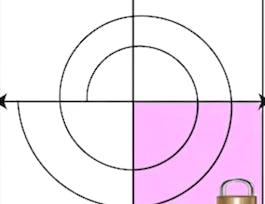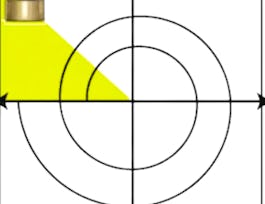In Requirements Goal Development and Language Analysis, we move from the spoken word to precise writing. A first step in this is writing goals. We will talk about goals used in requirements engineering and, from this, writing use cases from what we learn. Use cases can be in diagram and written form. Then- the villains enter- misuse cases and abuse cases are discussed in how we can deal with them in a Requirements environment. In gathering requirements, you'll have many questions remaining. Often this leads to the need of more interviews and group sessions. We'll go through how to handle group meetings, dealing with inconsistency, and handling conflict between stakeholders.


Requirements Specifications: Goals and Conflict Analysis
This course is part of Requirements Engineering: Secure Software Specifications Specialization
Taught in English
Some content may not be translated

Instructor: Kristen Walcott-Justice
4,961 already enrolled
Included with 
Course
(59 reviews)
Details to know

Add to your LinkedIn profile
10 quizzes
Course
(59 reviews)
See how employees at top companies are mastering in-demand skills

Build your subject-matter expertise
- Learn new concepts from industry experts
- Gain a foundational understanding of a subject or tool
- Develop job-relevant skills with hands-on projects
- Earn a shareable career certificate


Earn a career certificate
Add this credential to your LinkedIn profile, resume, or CV
Share it on social media and in your performance review

There are 4 modules in this course
After learning a lot from your customers, you now need to analyze, evaluate, and negotiate. One way to begin working with the data is to write out explicit goals from the information you've gathered. Goals can be written at high and low levels, but they need to be clear and measurable at any level. The first step is determining behavioral goals.
What's included
5 videos4 readings3 quizzes1 discussion prompt
Once goals have been identified, they can be pulled together to create use cases; these are easy to read and understand by both customer and developer. To address security, misuse cases and abuse cases can also be defined, in written or drawn form.
What's included
4 videos4 readings2 quizzes1 peer review1 discussion prompt
While writing use cases, you'll likely realize that you are missing many components, have questions, and realize that some statements conflict. Group Sessions can help you get more information quickly and begin the negotiation process. Here you'll learn about different types of group sessions and how to make group sessions efficient and effective.
What's included
4 videos4 readings3 quizzes1 discussion prompt
Inconsistency and conflicts often arise due to language that's being used. There are many types of inconsistency that you can identify early on. The conflicts identified need to be clarified and fixed. In this module, identifying inconsistency, identifying clashes, and handling conflict are discussed.
What's included
3 videos3 readings2 quizzes1 discussion prompt
Instructor

Offered by
Recommended if you're interested in Software Development

University of Colorado System

University of Colorado System

University of Colorado System

University of Colorado System
Why people choose Coursera for their career




Learner reviews
Showing 3 of 59
59 reviews
- 5 stars
77.96%
- 4 stars
16.94%
- 3 stars
3.38%
- 2 stars
0%
- 1 star
1.69%
New to Software Development? Start here.

Open new doors with Coursera Plus
Unlimited access to 7,000+ world-class courses, hands-on projects, and job-ready certificate programs - all included in your subscription
Advance your career with an online degree
Earn a degree from world-class universities - 100% online
Join over 3,400 global companies that choose Coursera for Business
Upskill your employees to excel in the digital economy
Frequently asked questions
Access to lectures and assignments depends on your type of enrollment. If you take a course in audit mode, you will be able to see most course materials for free. To access graded assignments and to earn a Certificate, you will need to purchase the Certificate experience, during or after your audit. If you don't see the audit option:
The course may not offer an audit option. You can try a Free Trial instead, or apply for Financial Aid.
The course may offer 'Full Course, No Certificate' instead. This option lets you see all course materials, submit required assessments, and get a final grade. This also means that you will not be able to purchase a Certificate experience.
When you enroll in the course, you get access to all of the courses in the Specialization, and you earn a certificate when you complete the work. Your electronic Certificate will be added to your Accomplishments page - from there, you can print your Certificate or add it to your LinkedIn profile. If you only want to read and view the course content, you can audit the course for free.
If you subscribed, you get a 7-day free trial during which you can cancel at no penalty. After that, we don’t give refunds, but you can cancel your subscription at any time. See our full refund policy.

